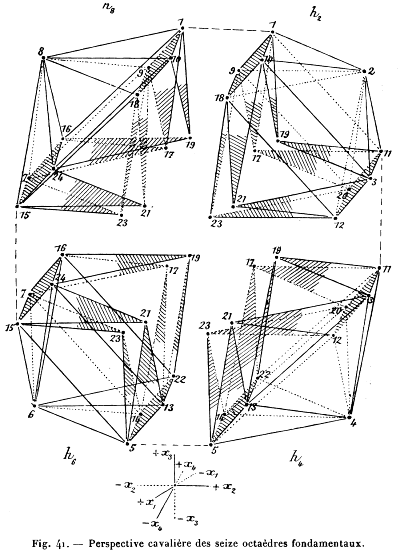Chekhov's Gun and Narratives of Control
We had a bit of a crisis in the past thirty-six hours. Just a small one, but it’s something that prevents Edgar from writing the book round up they had been planning on writing, and I was focused on getting things ready for my classes today, so I’m afraid that what you’re going to get today is probably going to be even less well-developed than what I normally put together. Quarter-baked. One-third at best.
※
I’ve been thinking about trying to merge my ideas from “The Political Economy of Game Design” and my ludo-analytic writing. The two are definitely related, with the latter being more well-developed and the former being more widely read. Ultimately, they both share a certain political and economic logic, trying to induce certain behaviors through the structuring of incentive and reward structures. The former is concerned with the origin of the incentives and how they are triggered, while the latter – when I’m not going on about magic circles and spoil-sports – is about the pathway taken by the incentive of punishment through the system of rules that is set up around it.
Previously, the possibility of using game design as an element of testing political theory has come up on this blog. Not in the sense of gamifying the DMV, but in the sense that it could allow people to test the rules under which they might live before it becomes a matter of life and death. The real trick – I think – is two-fold: first, developing a way to mirror policies which might go into effect in a toy context, and second, developing a useful vocabulary of potential structures (what I’ve called libidinal architecture) that can be stacked up and strung together and put into tension with one another.
And we’re back to N-Dimensional spaces, again.
Sure, in tabletop role-playing games (the type of game I think the most about designing) does have a certain vocabulary of things for a certain set of problems – how to choose who goes next, for example, or how to determine success or failure – but ultimately, the trick is figuring out how to construct the rules so the desired type of narrative comes out of it. It isn’t considered fun for the facilitator of the game to simply declare what will happen next by fiat – contrary to what I was told all through playing D&D in high school, the facilitator is not the “god” of the game, and structuring it that way isn’t desirable – but if you build the mechanics appropriately, you can encourage a desired outcome to happen in a way that is less deterministic than simple fiat.
This image is taken from the blog of Rob Donoghue, co-founder of Evil Hat games, who are doing some great things with the system. The specific page can be found here.
My preferred set of systems, Powered by the Apocalypse, tends to do this sort of thing quite well. One example is its use of “clocks” (which, as far as I’m aware, originated there, but can be uprooted and placed in other contexts fairly easily.) A clock is simply a circle divided into segments. Each segment is filled up when certain conditions are fulfilled, and at certain prearranged points, some bit of narrative is triggered. This sort of thing is common enough with video games – there’s a flag in the code and as you collect flags, things happen (the clock progresses, the villain approaches, you learn that the princess is in an entirely different castle and you have been stomping on turtles for no good reason to get to this one.) But then you can add a second one, and have competing clocks – now our heroes are in a race with rivals, and whoever gets to the end first achieves a desirable end, while the loser is consigned to the dustbin of (fake) history. If the clocks have different numbers of segments, that can indicate an asymmetry in starting position: they have to fill four, but you have to fill six. Try to keep up. Through a third clock, it becomes a race against time – sure you might lose, but perhaps you’re running through a sinking ocean liner, trying to collect some MacGuffin, competing with someone else for the same goal. One clock is your progress, the other is the enemy’s progress, and the third is how close the boat is to sinking: when a segment is filled in on either progress clock, the sinking clock gets one, two.
Effectively, this just means that you have to win by a certain amount, but the narrative clothing changes it from a simple dice game with complicated rules into a taut race between two spies through something that is definitely not the Titanic.
Again, read this book.
The idea is to draw mechanics from the body of available literature and string them together to create a set of rules that will emulate the conventions of a desired kind of story without a director calling cut and demanding a rewrite on the script (though, through the use of certain systems, like the X card, anyone can veto a story move that approaches a line. The important thing is that this is a safety tool, used to prevent interpersonal conflict and enable the smooth operation of the game.) It’s essentially the “safe word” you hear BDSM enthusiasts mention from time to time (or David Graeber in Bullshit Jobs, on what is lacking in office culture – it’s essentially sado-masochism without a safe word.)
The point of these rules is that the players freely enter into the magic circle of the game and then the rules help structure the genre features of the story experienced.
Part of the issue that I’ve found is that most of the genre-specific structures are encoded in guidelines that have little mechanical weight. While this works for engaged, good-faith participants, most of my game groups don’t tend to read through the whole of a book: one or two of them will, but the remainder tend to let the others guide them on the mechanical end of things.
My thinking has turned to how to create mechanical incentives for generically appropriate climaxes.
In literary and theatrical analysis, there is something called a “Chekhov’s Gun”, based on Anton Chekhov’s maxim to the effect that if you have a gun over the fire place in the first act, you need to have the gun go off in the third act. I’ve been thinking of ways to encourage this type of event in the setting of a tabletop role-playing game.
The closest I’ve seen thus far are the final advancements for each character type in Heart: The City Beneath, where the last ability each character type gets actually kills the character or otherwise removes them from the game in a dramatic way. This might be best thought of as a way to ensure that a long-running character goes out with a bang (or, in the case of the priest of debt, and them alone, possibly a way of paying off the debt and going back to live a normal life.)
The system I’ve considered is this: let’s say that there’s a character type that inherently possesses a one-time ability that can have significant game-world effect. The character wakes up at the start of session 1, and they have the one gun in the setting, and for that one gun they only ever have one bullet. Whoever they intend to kill with that bullet will die instantly. This, most likely, seems like a recipe for disaster for anyone who has ever run a game. Either that or a funny joke. It takes all kinds.
In short, it creates a Chekhov’s Gun and puts it — and its delayed firing — in the hands of a player. (The image is from the Wikipedia page for the concept — the image itself is used under a CC BY-SA 4.0 license, and is originally from user Tylwyth Eldar.)
But consider: what if you offered a small but steady reward for not using it? In PbtA games, it generally takes five experience points to advance, what if you were guaranteed one of those for not using the insta-kill option for the session? It’s not a huge reward, but it sets up a choice: take a bonus for leaving status quo in place or shatter it utterly. All of a sudden, the player has to engage in a certain amount of calculus: they’ll want to milk the system for the needed experience points, but if you play that character type and never use the instant kill option, you’ve wasted your opportunity. You want to advance, but you also want to change the game world and see what it looks like afterward. You’ll take the time to find the right spot to apply force, and then you’ll strike closer to the conclusion of the game than the beginning.
This has broader implications about how incentives are structured — the presence of a reward for not doing something versus the desired outcome of taking the action. To my mind, incentives can only delay such a thing, never actually forestall it for certain. It’s simply how long the delay is going to be that’s in question: at some point, you’re going to get to the point where the small reward for not engaging in the de facto prohibited action simply isn’t going to be enough to keep you away from the bigger reward. Especially if you accrue that benefit periodically. This is good, if you’re trying to set up a Chekhov’s Gun that encourages a third party to fire it on their own. This is bad, if you’re trying to figure out a regime of tax incentives.
This is what I mean by “libidinal architecture” — ways of installing valves and channels into the flows of desire to lead to a particular set of behaviors. I’m interested in this as a general object of study, because it seems to me that there are structures of control that are already in place. I want to figure out how they’re put together, because I would prefer to know how my thinking is being influenced.
And, who knows, maybe I’ll learn something about game design and course planning, too.
※
If you enjoyed reading this, consider following our writing staff on Twitter, where you can find Cameron (Bluesky link; not much there yet) and Edgar (Bluesky link). Just in case you didn’t know, we also have a Facebook fan page, which you can follow if you’d like regular updates and a bookshop where you can buy the books we review and reference (while supporting both us and a coalition of local bookshops all over the United States.) We are also restarting our Tumblr, which you can follow here.
Also, Edgar has a short story in the anthology Bound In Flesh, you can read our announcement here, or buy the book here.





